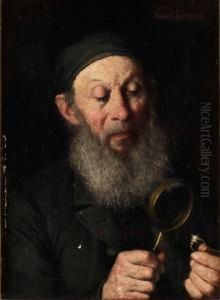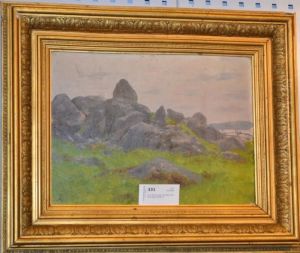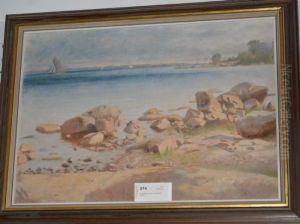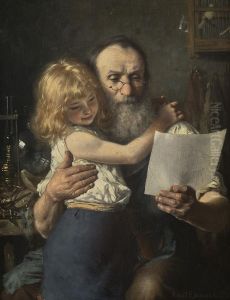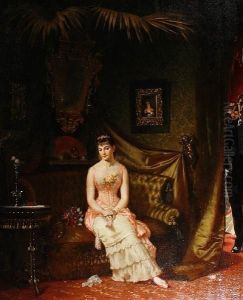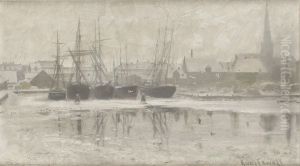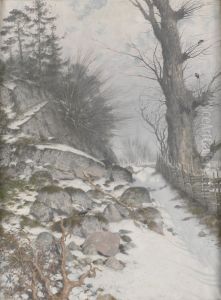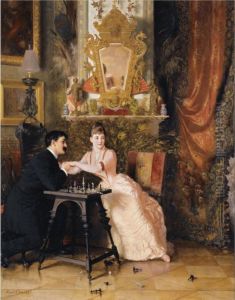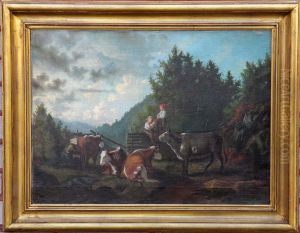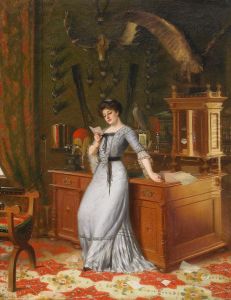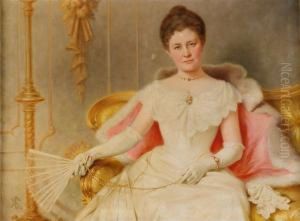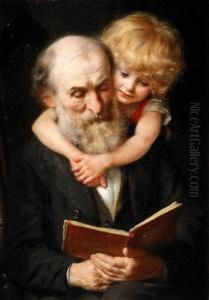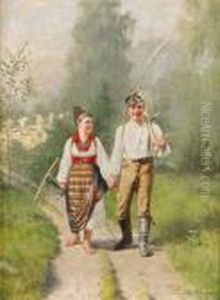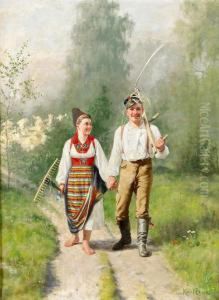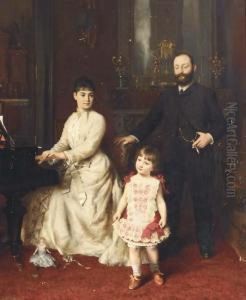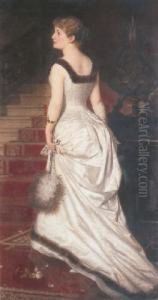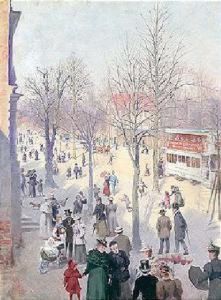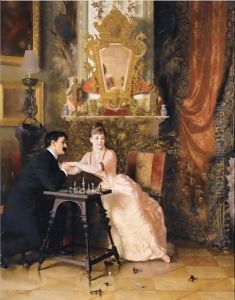H. Knut Ekwall Paintings
Hjalmar Knut Ekwall, commonly known as H. Knut Ekwall, was a Swedish painter known for his genre scenes and landscape artworks. Born on May 3, 1843, in Säby parish, Jönköping County, Sweden, Ekwall showed an early aptitude for art. He began his formal art education at the Royal Swedish Academy of Arts in Stockholm, where he honed his skills and developed a keen interest in genre painting, which depicts scenes of everyday life.
During his career, Ekwall became well-regarded for his ability to capture the nuances of rural life and the Swedish countryside. His work often featured elements of the Romantic and National Romantic styles, which were prevalent during the 19th century. Ekwall's paintings are characterized by their attention to detail, vibrant color palette, and the use of light to create mood and atmosphere.
In pursuit of further artistic development, Ekwall traveled to Munich, which was a popular destination for Scandinavian artists in the late 19th century. The Munich school of painting greatly influenced his style, and he integrated aspects of this training into his work. Ekwall also spent time in Paris, where he was exposed to the latest trends in the art world, including Impressionism.
Despite these influences, Ekwall remained committed to his roots in genre painting. He continued to explore themes related to Swedish culture and landscapes throughout his career. Ekwall's artwork gained recognition in Sweden and abroad, and he participated in several exhibitions, including the World's Columbian Exposition in Chicago in 1893.
H. Knut Ekwall's contribution to Swedish art was significant, as he helped capture and preserve the essence of 19th-century Sweden for future generations. His works remain in several collections, both in Sweden and internationally, and continue to be appreciated for their historical value and artistic beauty.
Ekwall's life came to an end on April 16, 1912, when he passed away. His legacy endures through his paintings, which are still studied and admired for their depiction of Swedish life and culture during a period of great national pride and artistic development.
